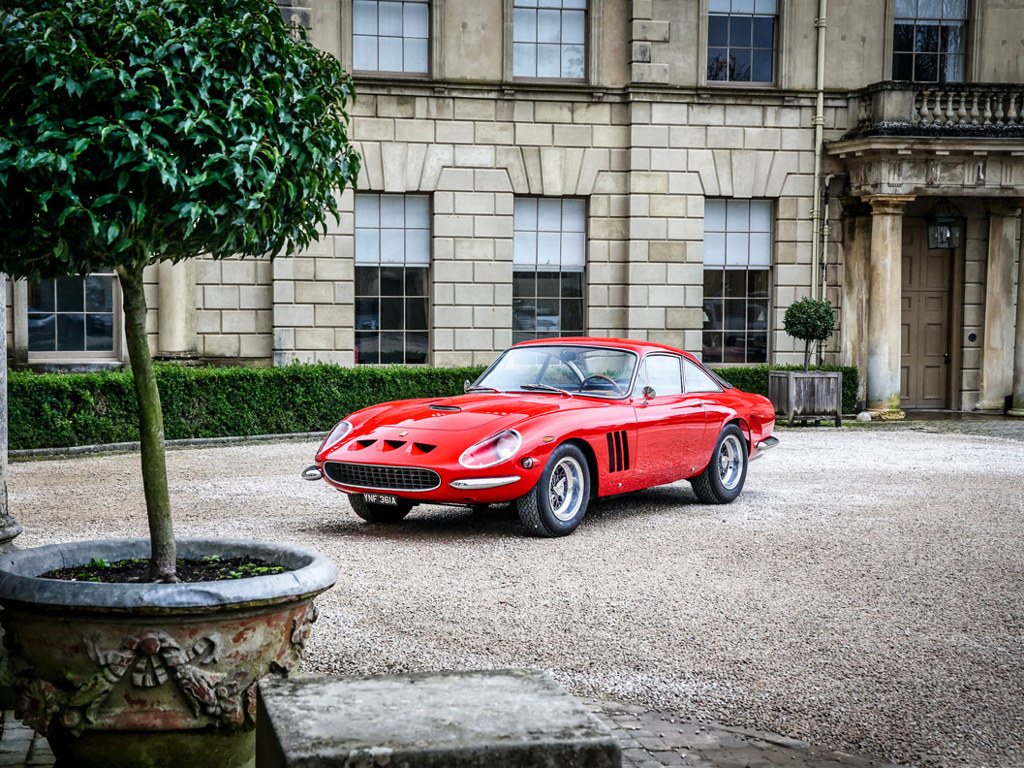In 1952, Mercedes-Benz returned to the post-war racing scene with what would become the incredibly beautiful, successful racing car, the 300 SL. The W 194 iteration not only looked sleek and track-ready but proved its competitive prowess as it amassed a serial list of victories with multiple race wins in Bern, Le Mans, and Nürburgring. With such a winning pedigree, when it was proposed that perhaps it was time to build a Mercedes-Benz sports car for the American public, it was decided that this next work of sports car machinery art would be derived from the successful 300 SL. And so design and production went quickly, enough that in February 1954, the W 198, Mercedes-Benz SL debuted. Its technical innovations were brilliant, including its place in history as one of the first Mercedes-Benz vehicles equipped with fuel injection, but there was one unexpected facet that really grabbed the people’s attention and curiosity: its doors.
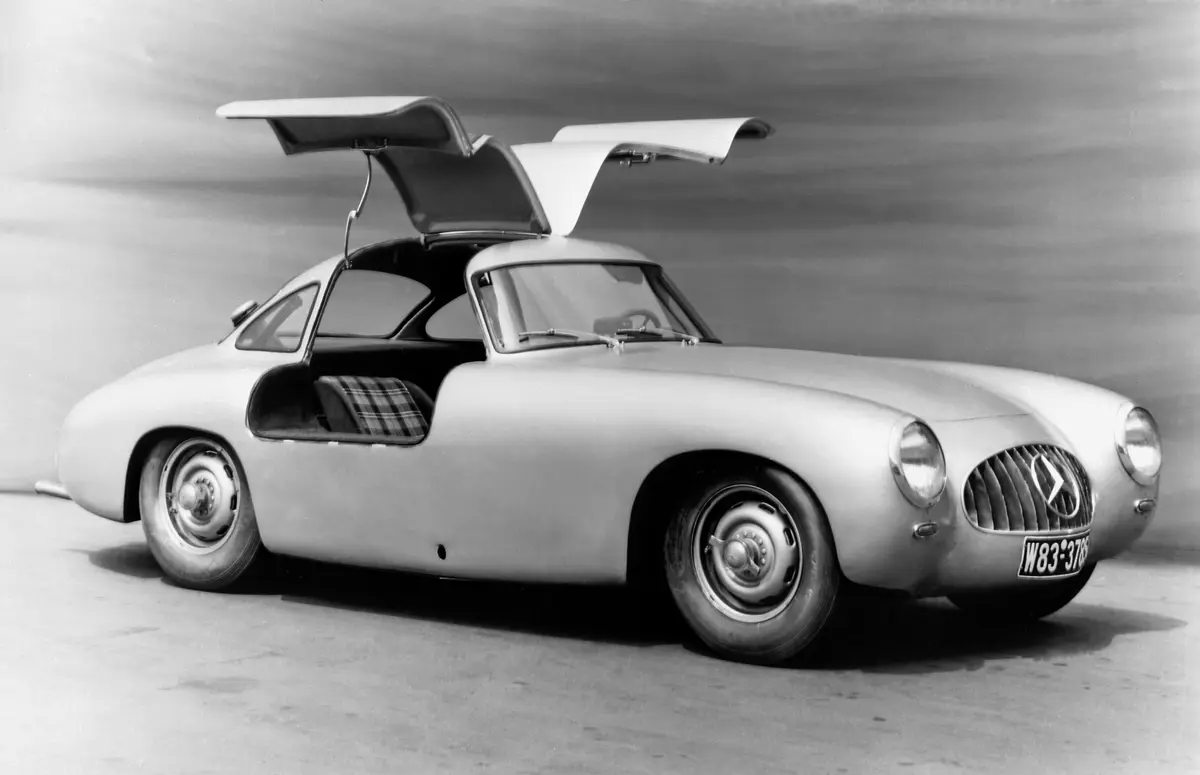
Original intentions going into the development of a road-going 300 SL were to make it a quick, enticing, lightweight sports car, carrying on the design elements that made the original track version so delightful and successful. The tubular Spaceframe, weighing in at just 50 kg, or 100 lbs., combined with the workings of a car, along with a spare tire, fuel, and tools on board weighed a cool total of 1,295 kg (2,855 lbs). Combine that with the 2,996-cc inline-six and its newfangled fuel injection addition that provided a 40-hp boost compared to its earlier powerhouse, and the car was capable of putting out 215 hp, making for an incredibly quick and nimble vehicle.
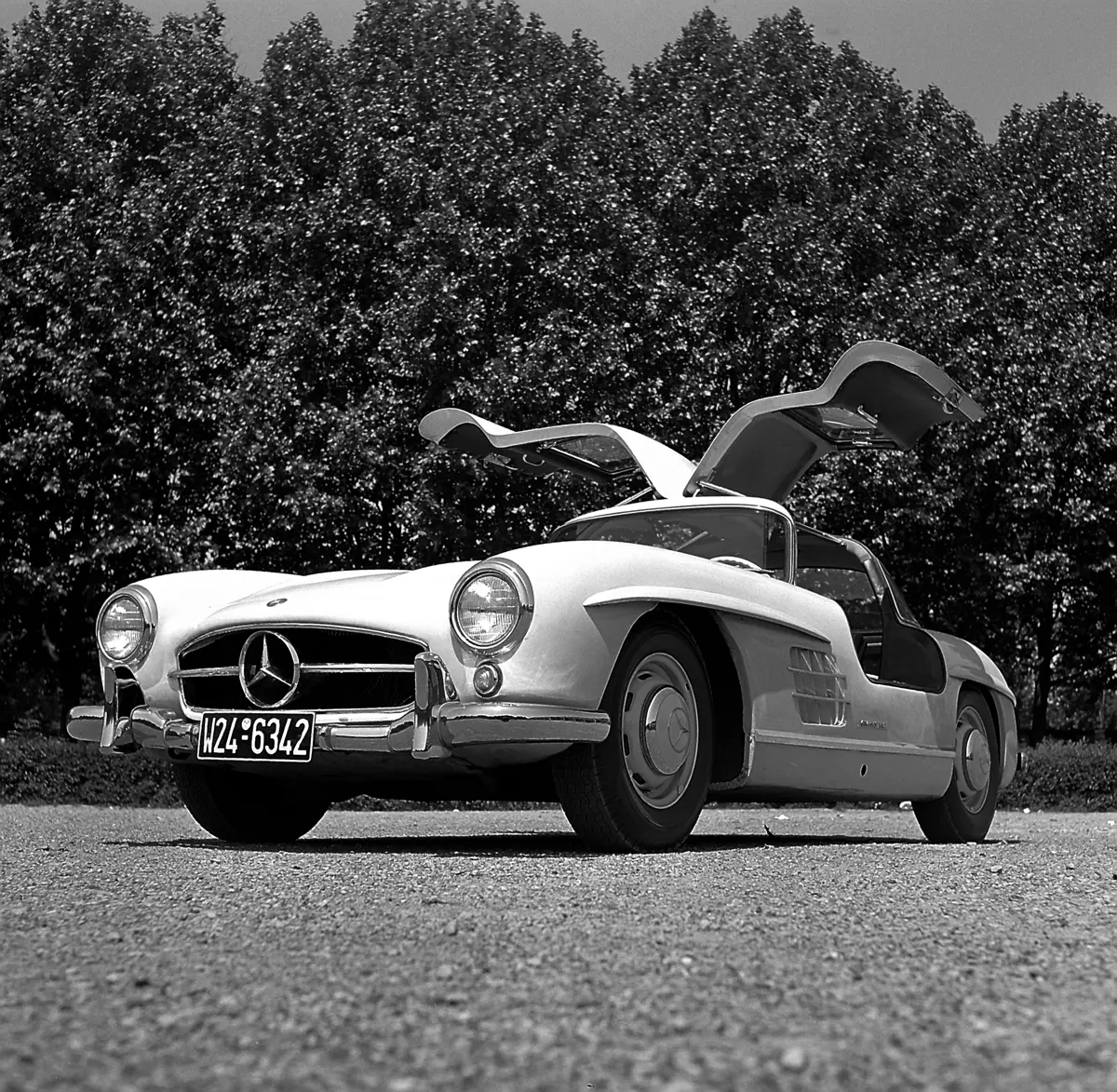
Aesthetically, soft curves on the 1952 racing model were molded into more angular— well-defined fenders, hoodlines, and overall body work for the 1954 model. The engine’s 50-degree angle placement would also help create an especially low and sleek front end compared to sports cars of before. The problem, which became the standout solution, were the doors. They became a necessary addition for the road-going model as well, due to the placement of the lightweight frame in relation to the roofline and the doors. The top sill was too high to put a conventional door in, and the feather-light frame made it difficult to support a heavy-weighted door, structurally or aesthetically. The new doors would lift upwards, pivoting from the roofline of the 300 SL in a way that looked like a set of wings. Thus, the “Gullwing” moniker, a nickname given to the car by English-speaking countries with the racing model, would live on with its customer models, too.
According to Mercedes-Benz, only 1,400 of these first Gullwing or Papillon (butterfly) 300 SLs were produced between 1954 and 1957. While the Gullwing doors were retired and gave way to an open-top roadster, and, in ‘58, a version that gained an option for a removable (and rare) hard-top, the legacy and the significance of the car remained. The 300 SL would live on without the Gullwing, as would the car world’s admiration for this exceptional “first” model, seeking the “ultimate dream car.” A jury of trade journalists agreed, voting the 300 SL as the “Sports Car of the Century” in 1999.
Now, 25 years after being voted the Sports Car of the Century, and 70 years after the first car was produced for the public, the Gullwing remains a truly significant and beautiful car in the history of early sports cars. It’s certainly something most anyone would love to have in their garage. It’s why, 70 years later, we are celebrating this early, and maybe at first glance, a considered oddball marvel, at our ModaMiami event. It’s proof of the innovative tenacity automakers and engineers have had and utilized to achieve some of the most remarkable cars to have ever been produced. The Gullwing also stands as an example that not every design issue or accident has to be a fatal flaw. Instead, it can become a notable, celebrated success.

Mercedes-Benz’ notable Gullwing design didn’t die when the 300 SL literally lost its wings. In the late 1960s, the German marque would revive a Gullwing design for a prototype vehicle, never intended to be sold to the public, but instead, focused on gathering research, specifically utilizing the cars as a testing bed for Wankel engines and sports car aerodynamics. It would be a few more decades before an actual Gullwing-styled production vehicle was available for consumer purchase.
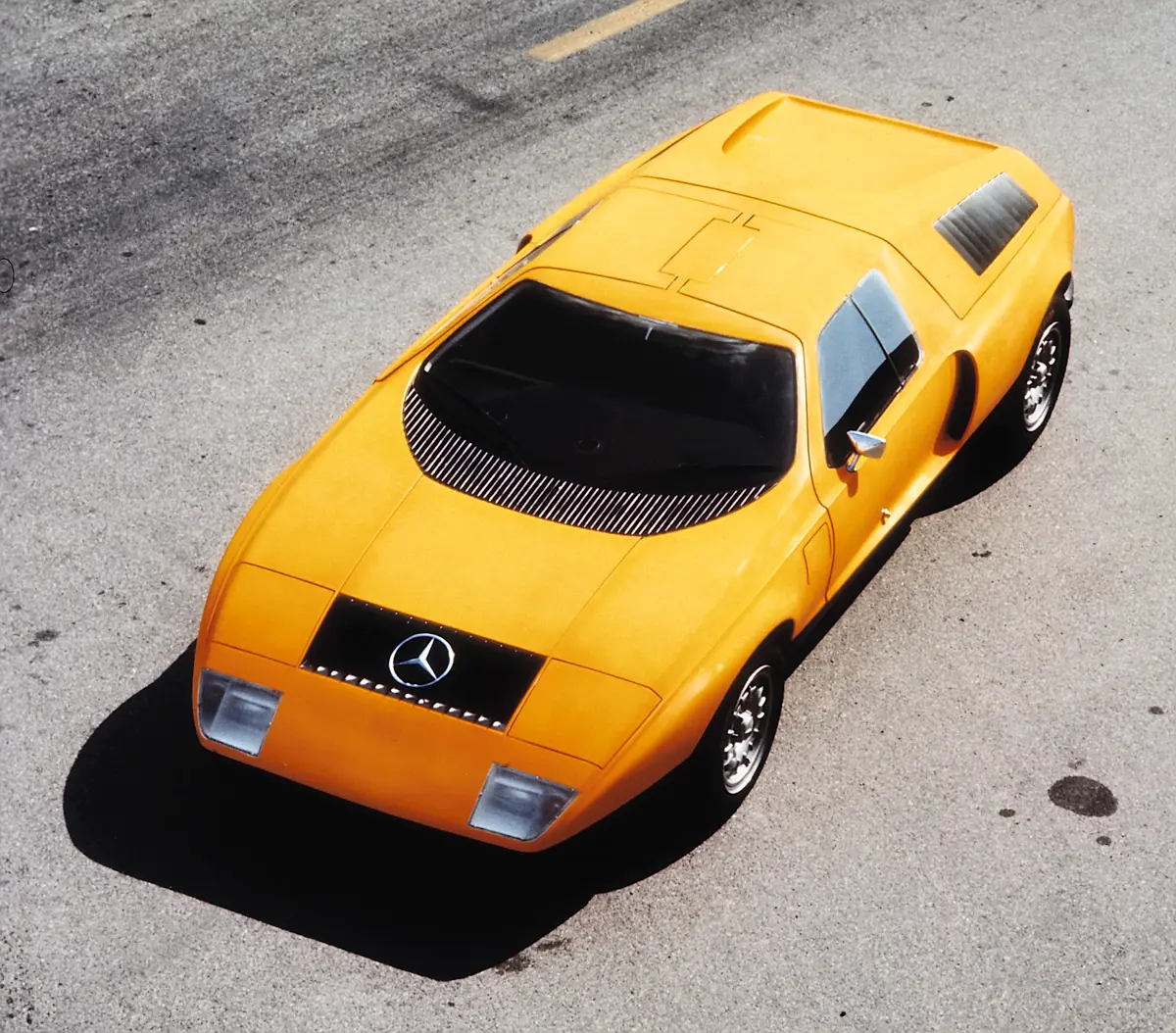
The C 111 Prototype
Introduced in the fall of 1969 at the Frankfurt International Motor Show, the C 111 was meant to be a display of Mercedes-Benz’s “futuristic study.” Much to the public’s dismay, who were hopeful for a successor to the beloved 300 SL Gullwing, the C 111 would never go into production. The first C 111 was a compact wedge-shaped car dressed in glass fiber synthetic bodywork painted in a bright orange (weissherbst), and equipped with a 3.6-liter displacement three-chamber rotary Wankel engine.

C 111-II
Just months later, Mercedes-Benz had already moved on to its next prototype, the C 111-II, making a public debut at the Geneva Motor Show in 1970. The second prototype wore more elegantly designed bodywork, and was also equipped with a Wankel engine, but this time, a four-chamber rotary engine with a power output of 350 hp. Unfortunately, although the Wankel all-around was lighter and more powerful than its combustion engine contemporaries, the Wankel’s exhaust emissions and thirst for fuel would end its days of testing utilization and any hope of making it into a production series Mercedes-Benz.

C 111-IID and the C 111-III
Mercedes-Benz would move on to testing diesel engines, starting with the C 111-IID. This variant utilized the 240 D 3.0 and 300 D’s 3.0-liter naturally aspirated five-cylinder diesel engine complete with turbochargers and intercoolers, for a power output of 190 hp. Its next iteration, the C 111-III, retained the diesel engine, but received a modified turbocharger to provide an additional 40- hp output (now at 230 hp). This one also had a bit of a facelift, resulting in a more streamlined exterior. Between the two, they would set a total of 12 world records and 27 class records.
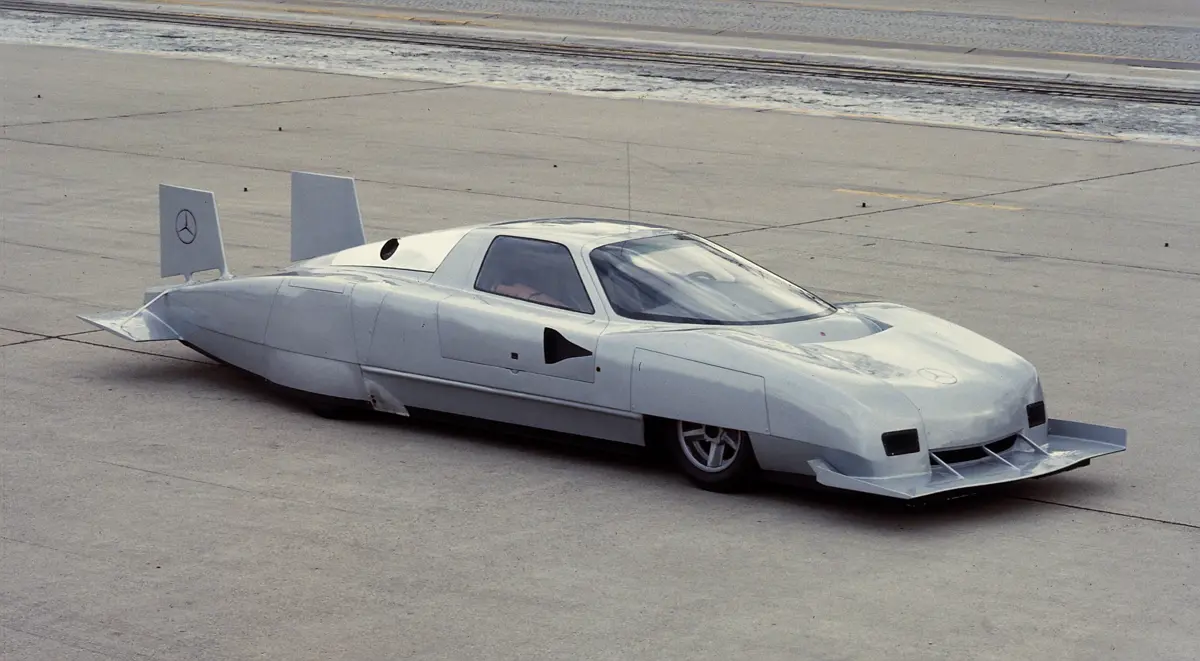
C 111-IV
1979 brought on the final form of the C 111, the C 111-IV, now with a much longer wheelbase, sleeker looks and a more powerful powerhouse: a 4.8-liter twin-turbo V-8 good for an output of 500 hp.
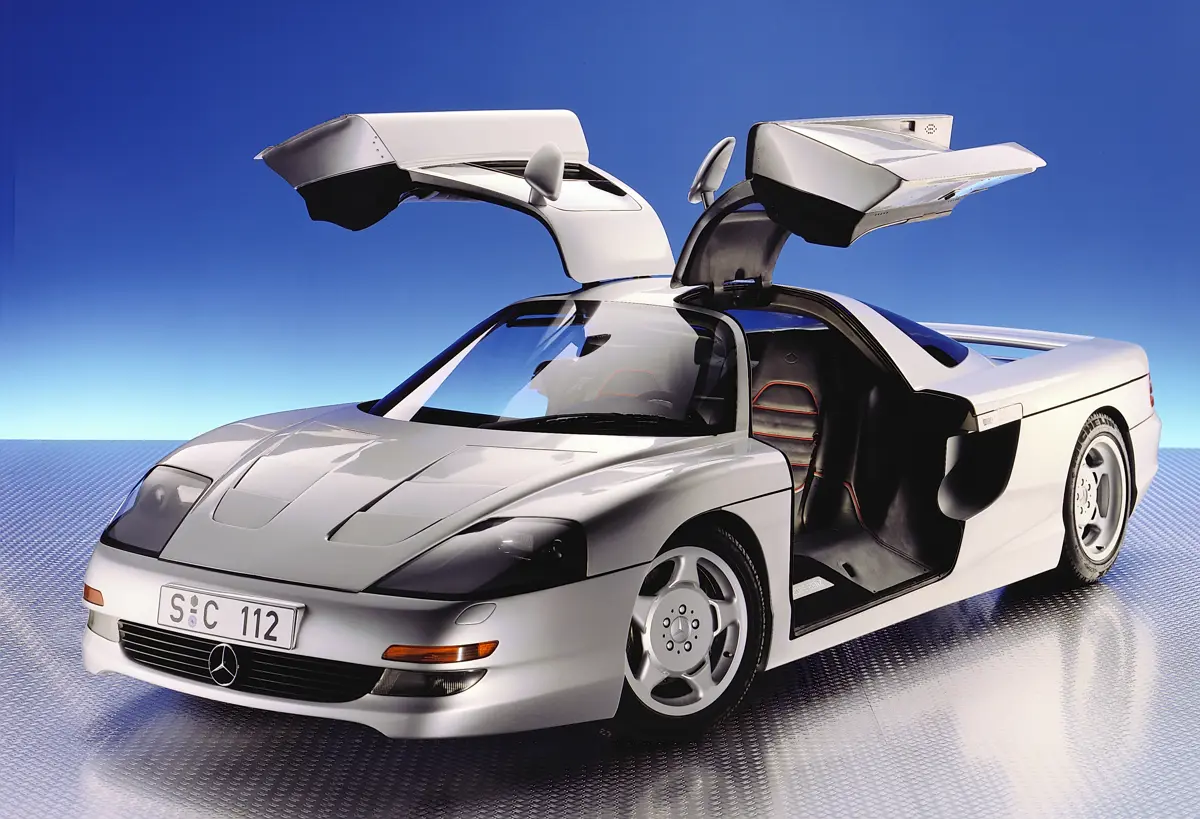
C 112
The C 112 didn’t make an appearance until 1991, but this prototype’s directive wasn’t far off from what Mercedes-Benz was trying to achieve back in the ‘70s. Just over a decade later, this prototype was testing new active dynamic handling control systems that would later make their way into production cars, such as Active Body Control, active rear-wheel steering, active aerodynamics, electronic tire pressure monitoring, and autonomous intelligent cruise control, which you might know better today as Adaptive Cruise Control.
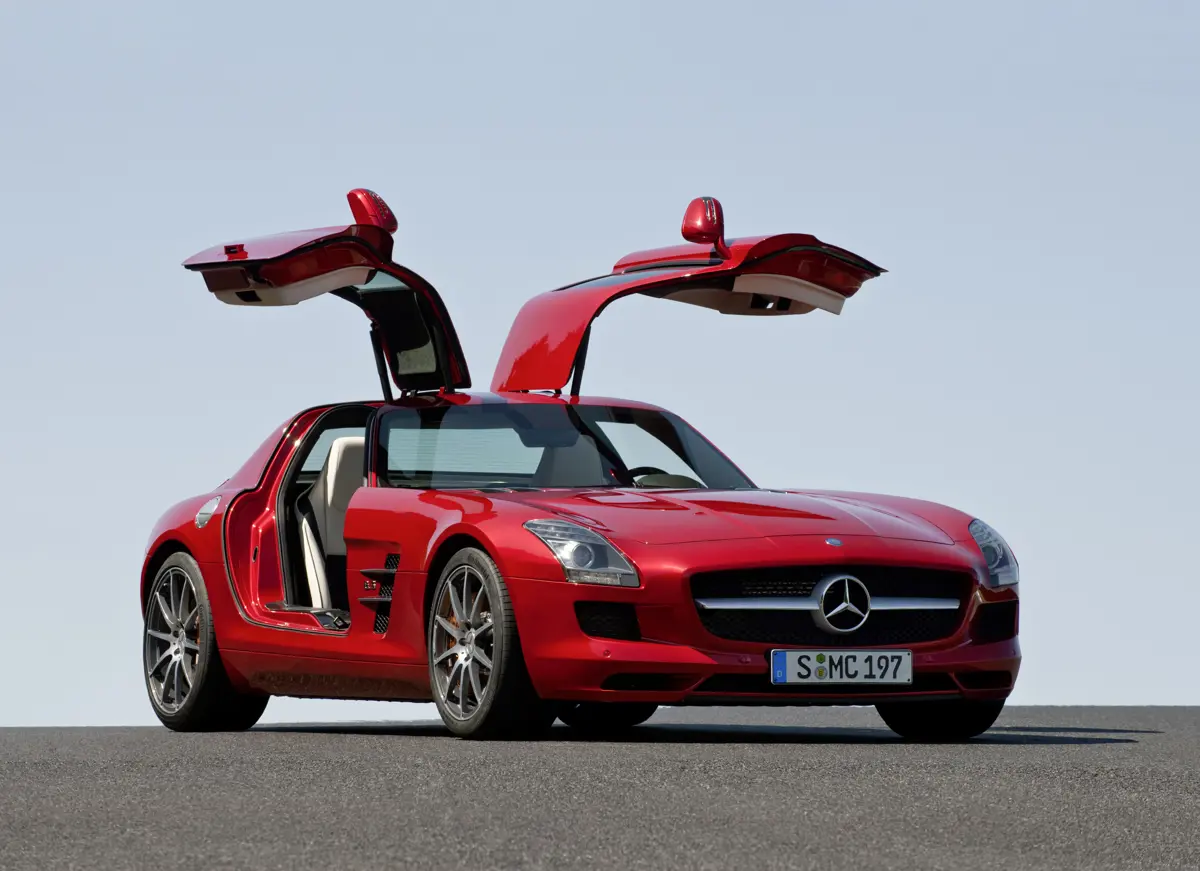
Another Gullwing for the People: The SLS AMG
In 2009, almost 55 years after the first gullwing Mercedes-Benz was introduced, the marque introduced the SLS AMG—a rebirth of the 300 SL, as Mercedes-Benz brought the original “Gullwing” into the 21st century. The modern iteration sported a similar but more dramatic long hood, short rear-end—and, of course, the Gullwing doors. This Gullwing’s front mid-engine housed a much more improved and impressive powerhouse as well, as the 2010 model’s 6.2-liter V-8 (M159) was good for 571 horsepower, and well over 600 hp in its final iteration in 2014.



